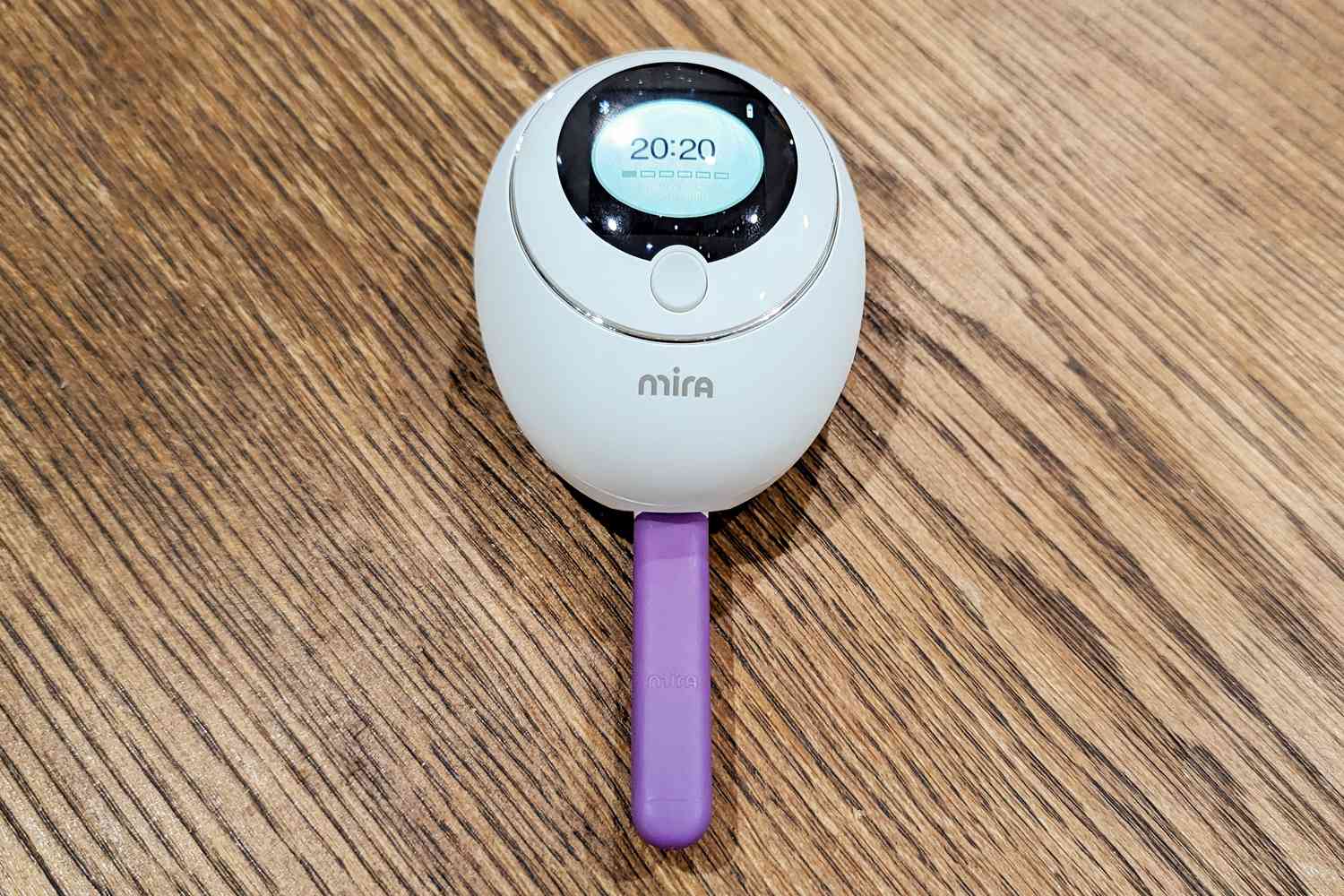9 Best Ovulation Tests for Accurate Fertility Tracking in 2024
Trying to conceive can be a thrilling yet challenging journey. Knowing when you’re ovulating is crucial, and that’s where ovulation tests come in handy. These tests can help you pinpoint your most fertile days, increasing your chances of getting pregnant.
With so many options on the market, choosing the right ovulation test can feel overwhelming. We’ve done the research for you and compiled a list of the 9 best ovulation tests. Whether you’re looking for digital accuracy or budget-friendly options, this guide has got you covered.
Choosing the Right Ovulation Test
Finding the right ovulation test can be tricky, but knowing what to look for makes the process easier. Here’s what you need to know before making a decision.
Factors to Consider
Accuracy: Look for tests with high accuracy rates. Digital tests often provide clearer results, reducing the chance of misinterpretation.
Ease of Use: Choose a test that’s easy to use. Simple instructions and quick results can save you time and stress.
Cost: Consider your budget. While some tests are pricier, you can find reliable, more affordable options.
Sensitivity: Check for test sensitivity. Higher sensitivity tests can detect even slight hormone changes, giving you a better chance to pinpoint ovulation.
Availability: Ensure the test is readily available. Buying from local stores or trusted online retailers helps you avoid delays in tracking your cycle.
Types of Ovulation Tests Available
Urine-Based Tests: These are the most common. They detect luteinizing hormone (LH) surges in your urine. Examples include strips and digital readers.
Saliva-Based Tests: These detect changes in saliva consistency. They can be reused but might be less accurate for some users.
Basal Body Temperature (BBT) Thermometers: BBT is another method. They require you to track your temperature daily and look for patterns.
Hormone Tracking Devices: These advanced devices monitor multiple fertility indicators. They’re pricier but offer comprehensive tracking and data analysis.
Choosing the right ovulation test involves understanding your needs and preferences. By considering these factors and knowing the available types, you’ll be better equipped to find a test that works for you.
Review of the 9 Best Ovulation Tests
Exploring the best ovulation tests ensures you find one that perfectly suits your needs. Here’s a detailed look at the top options:
Clearblue Digital Ovulation Predictor Kit
Discovering your two most fertile days is easy with the Clearblue Digital Ovulation Predictor Kit. This kit offers 99% accuracy by detecting the LH surge. Its digital display provides clear results, eliminating any guesswork. The simple ‘smiley face’ indicator shows when you’re at peak fertility.
Brand Name Advanced Digital Test
Relying on advanced technology, the [Brand Name] Advanced Digital Test offers multiple readings to pinpoint your fertility window. It measures both estrogen and LH levels, giving you a broader view of your fertile period. This test is user-friendly with a digital screen showing clear results, making it easier to plan.
Generic Ovulation Urine Test Strips
Providing a budget-friendly solution, Generic Ovulation Urine Test Strips are highly effective. These strips detect the LH surge with 99% accuracy. They’re straightforward to use and interpret, featuring clear lines indicating your fertility status. Best for frequent testing, they offer an economical way to monitor your ovulation cycle accurately.
By understanding these options, you can make an informed choice that aligns with your fertility planning needs.
Features of Top Ovology Tests
Discover the key features of the most efficient ovulation tests to help with your fertility planning. These aspects make them stand out in meeting your conception goals.
Accuracy and Sensitivity
Accurate ovulation tests can pinpoint your most fertile days. High-sensitivity tests can detect even the smallest surge in luteinizing hormone (LH), ensuring you don’t miss your peak fertility. Clearblue Digital Ovulation Test, for instance, boasts over 99% accuracy in detecting LH surges, making it highly reliable.
Ease of Use and Reading Results
User-friendly designs can simplify the tracking process. Digital tests like the Brand Name Advanced Digital Test offer easy-to-read results with smiley faces or digital indicators, eliminating guesswork. Test strips such as Generic Ovulation Urine Test Strips also provide clear lines to indicate results, though they may require some interpretation.
Cost-Effectiveness
Balancing quality with affordability is crucial. While digital tests tend to be on the pricier side, their accuracy and ease of use can justify the cost. Test strips generally offer a more cost-effective alternative, with packs containing multiple strips, making frequent testing economical. For example, Generic Ovulation Test Strips are budget-friendly and still provide reliable results.
Pros and Cons of Each Test
Choosing the right ovulation test can make a big difference in your fertility planning. Here, we’ll dive into the pros and cons of digital and non-digital tests, as well as strips and midstream tests.
Digital vs. Non-Digital Tests
Digital Tests:
- Accuracy: Digital tests like the Clearblue Digital Ovulation Predictor Kit are over 99% accurate in detecting LH surges.
- Ease of Use: They display clear results with symbols or words, making them user-friendly.
- Cost: Generally more expensive than non-digital tests.
- Battery Dependency: Rely on batteries which may need replacement.
Non-Digital Tests:
- Affordability: More budget-friendly, making them accessible for long-term use.
- Interpretation: Require manual reading of lines, which can sometimes be ambiguous.
- No Battery Needed: Function without batteries, offering convenience.
- Accuracy: Reliable but often less precise than digital options.
Strips vs. Midstream Tests
Strips:
- Cost-Effective: Generic Ovulation Urine Test Strips are highly affordable.
- Bulk Purchase: Often available in bulk, allowing frequent testing.
- Accuracy: Effective in detecting LH but may involve deciphering faint lines.
- Usage: Involve dipping into collected urine, which some may find inconvenient.
- Convenience: Easier to use as you can urinate directly on the stick.
- Cleanliness: Less mess and hassle compared to urine collection.
- Cost: Typically pricier than strips.
- Storage: Often more durable and portable than strips.
By weighing these pros and cons, you can determine the best ovulation test to meet your specific needs and preferences.
How to Use Ovulation Tests Effectively
Using ovulation tests correctly maximizes your chances of identifying your most fertile days. Following best practices and avoiding common mistakes ensures accuracy.
Best Practices for Testing
Follow these steps for the best results:
- Test at the Same Time Each Day: Consistency enhances result accuracy. Choose a time when your urine is concentrated.
- Limit Liquid Intake: Reduce fluid intake 2 hours before testing. Excess hydration dilutes hormone levels.
- Use First Morning Urine: It generally contains a higher concentration of hormones, offering more reliable results.
- Read Instructions Carefully: Each test has specific guidelines. Follow them precisely for valid outcomes.
- Track Monthly Cycles: Monitoring cycles aids in predicting ovulation timing, informing when to start testing.
Common Mistakes to Avoid
Avoid these errors to ensure reliability:
- Testing Too Early/Late: Testing outside the recommended window skews results. Know your cycle to test during the fertile window.
- Ignoring Subtle Lines on Strips: Misinterpreting faint lines leads to incorrect predictions. Digital tests remove this uncertainty.
- Using Expired Tests: Outdated kits may yield false results. Always check the expiration date.
- Misunderstanding Results: Misreading symbols or lines is common. Familiarize yourself with the instructions before interpreting the test.
- Skipping Days: Consistency is key. Daily testing during the fertile phase ensures you won’t miss the LH surge.
Implement these tips to effectively use ovulation tests and enhance fertility planning.
User Reviews and Testimonials
Hearing from real users can help you decide the best ovulation test for your needs. Let’s dive into what users are saying.
Positive Feedback and Success Stories
Users rave about the reliability and ease of clear digital ovulation tests. Many users mention consistently accurate results, helping them pinpoint their most fertile days. Success stories often highlight couples who achieved pregnancy within a few months of using these tests. Several reviews praise the intuitive interface of mobile app-connected tests. They appreciate the added convenience of syncing with their phones for detailed cycle tracking. Non-digital strip tests also receive positive remarks for affordability and easy interpretation of results with distinct lines.
Critiques and Common Complaints
Some users find certain digital tests too expensive for long-term use. Common complaints include difficulty reading the results on non-digital strips due to faint lines. A notable critique concerns midstream tests and the messiness involved during use. Users occasionally express frustration over the inaccurate results from expired tests they didn’t know had expired. Lastly, some users mention receiving false negatives, leading to confusion and missed fertile windows.
Considering user reviews and testimonials can provide you with valuable insights when choosing the right ovulation test to suit your needs.
Frequently Asked Questions About Ovulation Tests
How Often Should I Test?
You should start testing a few days before you expect to ovulate. If your cycles are regular, begin testing about 10-12 days after your last period started. Testing daily during your predicted fertile window ensures you don’t miss the surge in luteinizing hormone (LH), which indicates ovulation is near.
What Time of Day Is Best for Testing?
You should test in the afternoon or early evening. LH levels are typically higher later in the day, so avoid using first morning urine when testing. Following a consistent daily testing time and limiting fluid intake two hours before testing can improve accuracy.
Conclusion and Recommendations
Choosing the right ovulation test can significantly enhance your chances of conception. Whether you prefer digital tests for their ease of use or non-digital options for their affordability, it’s essential to follow best practices for accurate results. Remember to test at the same time each day and use first morning urine for consistency. Avoid common mistakes like testing too early or misinterpreting results.
User reviews highlight the reliability of digital tests despite their higher cost. For the most accurate results, consider testing a few days before your expected ovulation and in the afternoon. Consistent testing and limiting fluid intake can further improve accuracy. By selecting the best ovulation test for your needs and adhering to these guidelines, you’ll be well-equipped to pinpoint your most fertile days.
Frequently Asked Questions
What are ovulation tests used for?
Ovulation tests help identify a woman’s most fertile days by detecting the surge in luteinizing hormone (LH) that precedes ovulation.
What is the difference between digital and non-digital ovulation tests?
Digital ovulation tests offer clear results, often displayed as symbols on a screen, while non-digital tests like strips show lines that can be harder to interpret. Digital tests are generally more expensive but more user-friendly.
When is the best time to take an ovulation test?
It’s recommended to test in the afternoon, as LH levels tend to surge during this time. Consistency in testing at the same time daily improves accuracy.
Can I use first-morning urine for ovulation testing?
No, first-morning urine is not ideal. Testing in the afternoon provides more accurate results due to naturally higher LH levels later in the day.
How should I prepare for an ovulation test?
To ensure accurate results, limit fluid intake for about two hours before testing to avoid diluting your urine.
When should I start testing for ovulation?
Begin testing a few days before you expect to ovulate, based on the length of your menstrual cycle. For example, if you have a 28-day cycle, start testing on day 10.
How accurate are ovulation tests?
Ovulation tests are generally accurate when used correctly, but digital tests tend to be more reliable due to their user-friendly results.
What are common mistakes to avoid when using ovulation tests?
Avoid testing too early or too late in the cycle, using first-morning urine, and misinterpreting line results on non-digital tests.
How can I track my monthly cycles effectively for ovulation testing?
Use a calendar, mobile app, or fertility tracking device to monitor the length and regularity of your cycles, helping to predict your fertile window more accurately.
Are digital ovulation tests worth the cost?
User reviews often praise the reliability and ease of digital tests, despite their higher cost. If you have trouble interpreting line results, a digital test might be worth the investment.






